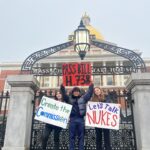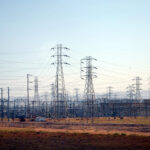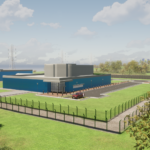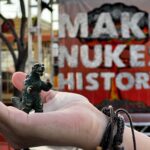Nuclear power and the public
By M.V. Ramana | August 3, 2011
On April 10 of this year, nearly a month after a disastrous earthquake and tsunami struck Japan, thousands of protesters took to the streets of Tokyo, calling for an end to nuclear power. In the city’s Koenji neighborhood, a large group of mostly younger protesters, many in costume, chanted and banged drums. In Shiba Park, an older and more sober group demanded the closure of the Hamaoka nuclear power plant, located near a fault line about 200 kilometers (125 miles) southwest of Tokyo.
These public protests are symptomatic of a general decline in public support for nuclear power in Japan, a country that derived about 30 percent of its electricity from nuclear power in 2010. Recent polls have suggested that somewhere between 41 and 54 percent of Japanese support scrapping, or reducing the numbers of, nuclear power plants. By comparison, a 2005 poll conducted by the International Atomic Energy Agency found that 82 percent of Japanese favored building more plants or maintaining existing ones. Partly in response to the recent growing opposition, on May 6, Japanese Prime Minister Naoto Kan instructed the operator of Hamaoka to shut down all three reactors there. Four days later, Kan called for a new energy policy with less reliance on nuclear power.
Japan is by no means alone. Around the world, nuclear energy has declined in popularity. In the United States, for example, a Washington Post-ABC poll conducted in April 2011 found that 64 percent of Americans opposed the construction of new reactors. Another poll, conducted by CBS News in March 2011, soon after the Fukushima crisis began, found that only 43 percent of those polled would approve of building new reactors, down from a 57 percent approval rating in 2008. Support for nuclear power was similar or lower in countries as varied as Chile (12 percent), Thailand (16.6 percent), Australia (34 percent), and the United Kingdom (35 percent). Even in France, which relies on nuclear power for about three-quarters of its electricity, one poll found that a majority (57 percent) were in favor of abandoning nuclear energy.
These approval ratings are not strictly comparable because the polls were conducted by different agencies, asking different questions and providing different kinds of information prior to asking the questions. Nevertheless, there is little doubt among those who study public opinion on nuclear power that, by and large, it does not command much support.
Nuclear power wasn’t always so unpopular. For example, in the United States in 1977, when CBS News conducted its first poll on nuclear power, 69 percent of those surveyed expressed support for building more nuclear plants. Just two years later, after the Three Mile Island accident, public support had plummeted to 46 percent, and it dropped further to 34 percent after the 1986 Chernobyl accident. Since the 1980s, a majority of the US population has consistently opposed the construction of new nuclear reactors. Not coincidentally, there has been practically no nuclear construction in the United States since Three Mile Island.
The public perceives nuclear power as a very risky technology. In some cases, association with nuclear facilities is even subject to stigma. The nuclear industry has tried a variety of strategies to break down public resistance to nuclear power, but they haven’t worked well. With growing public concern about global warming, the industry is experimenting with a new strategy — playing up the climate mitigation potential of nuclear power. While this has increased the benefit side of the equation for nuclear power, it hasn’t decreased the risk perception associated with the technology, and nuclear power remains a reluctant choice at best. Renewable energy technologies offer the same benefits, making it unlikely that a large-scale “nuclear renaissance” will materialize.
A dreaded technology. What explains public opposition to nuclear power? Proponents of nuclear power often dismiss opposition as a “not in my backyard” (NIMBY) phenomenon.
The full contents of this article are available in the July/August issue of the Bulletin of the Atomic Scientists and can be found here.
Together, we make the world safer.
The Bulletin elevates expert voices above the noise. But as an independent nonprofit organization, our operations depend on the support of readers like you. Help us continue to deliver quality journalism that holds leaders accountable. Your support of our work at any level is important. In return, we promise our coverage will be understandable, influential, vigilant, solution-oriented, and fair-minded. Together we can make a difference.
Topics: Nuclear Energy, Opinion















